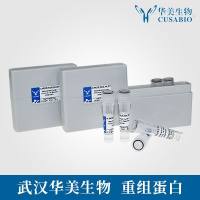Isotopic Efflux Studies as Indices of Phospholipase Activation
互联网
|
1. Metabolites can be rapidly metabolized, interconverted, or re-esterified(10) . |
|
2. Radiolabeling of lipid pools with lipid-soluble precursors (e.g., fatty acids) has many interpretive problems. Also, metabolically “inactive” pools of phospholipid substrates may produce high “basal levels” of lipid byproducts, and obscure acute changes induced by agonists. |
|
3. Accumulation in the medium of certain constituents (e.g., H+ , released hormones) may perturb physiologic changes see Table 2 , item 7) |
|
4. Important rapid and/or phasic changes can be easily missed (11 ). |
|
Problem |
Solutions |
|---|---|
|
1. Exchange mechanisms (e.g., base exchange) can also lead to efflux of label. |
a. Document reduction in substrate (phospholipid) by mass measurements. |
|
b. Demonstrate that qualitatively similar patterns of efflux occur in the absence of “chase” (but see item 4, below ). |
|
|
2. Lack of isotopic equilibrium (i.e., short labeling period) may limit conclusions, especially if “compartmentation” exists; provision of chase (to prevent reincorporation of label) can disturb isotopic equilibrium. |
a. Document isotopic steady state, ideally in both lipidic and aqueous compartments. |
|
b. See solution 1b, above . |
|
|
c. Provide mass measurements of metabolite. |
|
|
3. Labeling of endogenous substrate may be perturbed by experimental conditions or test agents |
a. Document that labeling is unaltered by test agents. |
|
b. Confirm results using exogenous substrate. |
|
|
c. Express results as fractional efflux rates (i.e., in terms of total labeling in lipid extracts). |
|
|
4. Released label may be reincorporated into substrate, or adhere to tubing. |
a. Provide “chase” (but see items 1 and 2, above ). |
|
b. Concomitantly assess intracellular metabolites prior to their metabolism or reincorporation (e.g., IP s). |
|
|
c. Block reincorporation (10) . |
|
|
d. Block adherence by adding albumin to perifusate (including during preincubation period), or flushing line with chase. |
|
|
5. Leakiness of cell membrane (or adherence to cells of dpm from the labeling period) can cause physiologically irrelevant efflux. |
a. Document a concurrent rise (rather than a decline ) in intracellular levels of the metabolite (i.e., in the aqueous phase of cell extracts) (12) . |
|
b. Document integrity of cell membranes. |
|
|
c. Eliminate bubbles in perifusion line. |
|
|
d. Wash cells extensively after labeling (until basal efflux rates are stable). |
|
|
6. Unanticipated metabolites may contribute to efflux of radioactivity (see also item 5, above ). |
a. Identify metabolites in medium (anion or cation exchange chromatography; TLC system for aqueous samples) (2) . |
|
b. Block interconversion or breakdown of metabolites (e. g., using Li+ ) (4,5) |
|
|
c. Document stoichiometric intracellular >generation of lipidic byproduct (e.g., diglycerides, phosphatidic acid, lysophospholipid). |
|
|
7. Constituents of perifusion medium (e.g., albumin [3] , fatty acids) may influence results. In static incubations, compounds which might influence results (e.g., H + , insulin [11] , phospholipid metabolites) may accumulate in the medium. |
a. Maximize test conditions for all variables. |
|
b. Confirm results from static incubations with dynamic incubations (perifusions). |
|
|
8. In neurosecretory cells, unincorporated label might accumulate in secretory granules or vesicles, and be cosecreted passively. |
a. Verify findings in the presence of a secretory inhitor (one not directly altering phospholipase activation). |







